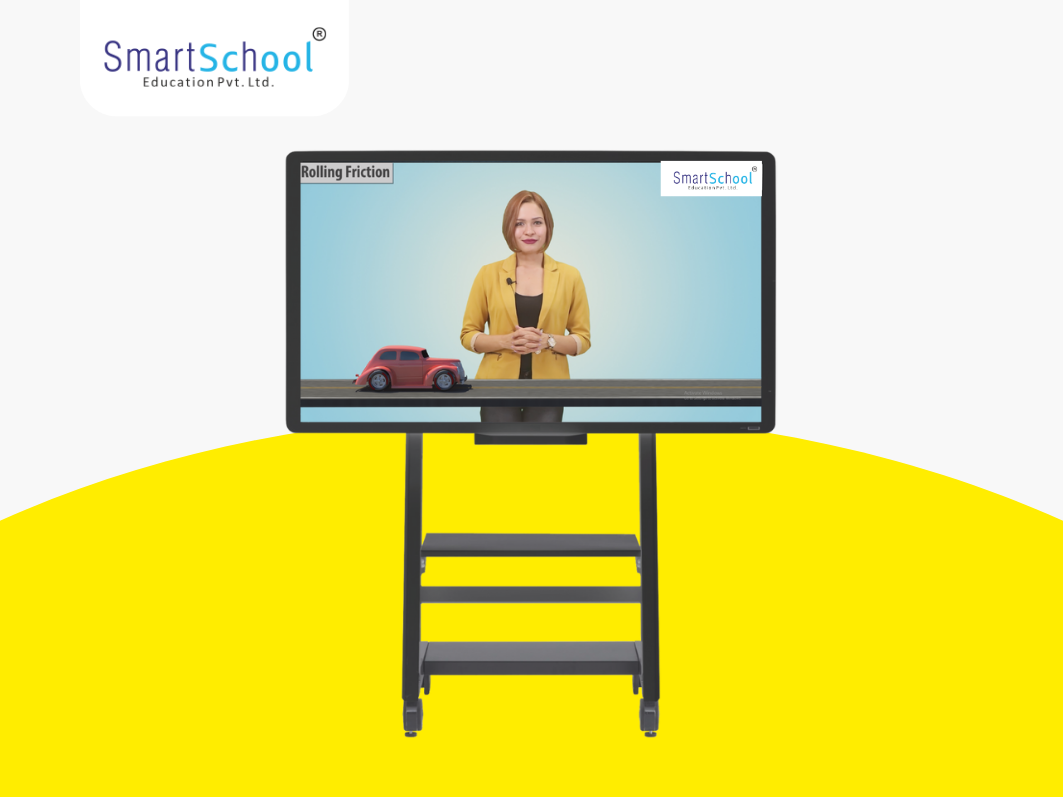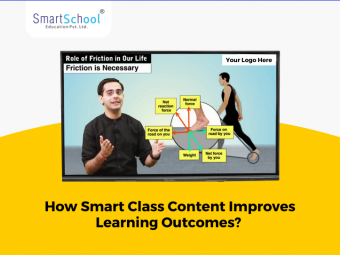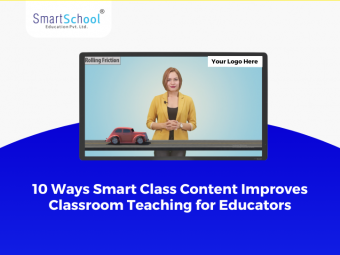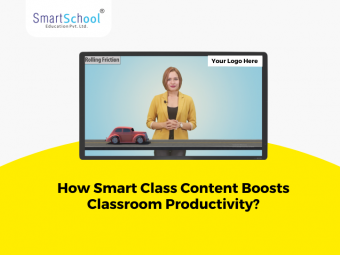
What is Educational Content?
Educational content refers to any material, resources, or information that is designed and created with the primary purpose of facilitating learning and acquiring knowledge. It is specifically developed to educate and teach individuals about a particular subject, topic, or skill.
Educational content can take various forms, including textbooks, lectures, videos, interactive multimedia, online courses, tutorials, quizzes, assessments, and more.
Types Of Educational Content
Digital Educational Content:
Digital educational content encompasses a wide range of resources that can be accessed through electronic devices. It includes interactive and engaging videos, quizzes, games, e-books, and various multimedia elements.
These resources leverage technology to create immersive learning experiences, capturing students' attention and enhancing their understanding of the subject matter. Digital content allows for customization and adaptation to individual learning needs, promoting self-paced learning and offering immediate feedback for assessment.
1. Interactive Videos:
Interactive videos are an engaging form of educational content that combines multimedia elements and interactive features. These videos enable students to actively participate in the learning process by interacting with the content, exploring additional information through clickable hotspots, and answering questions embedded within the video.
They provide a dynamic and immersive learning experience that enhances comprehension and retention of the subject matter.
2. Quizzes:
Quizzes serve as valuable educational content for assessing students' understanding and knowledge retention. They are effective tools for evaluating comprehension, reinforcing concepts, and identifying areas that require further attention.
Quizzes can be administered in various formats, such as multiple-choice, true/false, or short answer questions, and can be delivered through traditional pen-and-paper or digital platforms. They provide students with an opportunity to apply what they have learned and receive immediate feedback on their performance.
3. Games:
Games are an interactive and enjoyable form of educational content that promotes active learning and skill development. Educational games are designed to engage students through challenges, problem-solving tasks, and rewards.
They provide a hands-on approach to learning, allowing students to practice and apply knowledge in a fun and engaging way. Games can cover a wide range of subjects and skills, offering opportunities for both individual and collaborative learning experiences.
4. Educational Apps:
Educational apps are digital platforms that offer a wide variety of educational content, including interactive lessons, practice exercises, quizzes, and multimedia resources. These apps provide access to educational materials anytime and anywhere, allowing students to personalize their learning experience.
They offer features such as progress tracking, adaptive learning, and gamification, enhancing student engagement and motivation. Educational apps cater to different learning styles and offer a diverse range of subjects and topics to support classroom instruction.
Offline Educational Content:
Offline educational content refers to materials that can be utilized in classrooms without relying on internet connectivity or electronic devices. This category includes textbooks, workbooks, printed worksheets, flashcards, and manipulatives. Offline content provides tangible resources that allow students to engage in hands-on activities, practice skills, and reinforce concepts.
It is particularly useful in settings with limited access to technology or when a more traditional approach to teaching is preferred. Offline educational content also serves as a backup in case of technology failures or disruptions in internet connectivity.
Importance Of Educational Content
The importance of educational content for the classroom cannot be overstated. It forms the foundation of the learning experience and plays a crucial role in facilitating effective teaching and learning. Here are several key aspects highlighting the significance of educational content in the classroom:
1. Enhancing Student Engagement:
Well-designed educational content has the power to captivate students' attention and ignite their curiosity. It provides them with relevant and interesting information that stimulates their thinking and encourages active participation in the learning process. Engaged students are more likely to retain knowledge, develop critical thinking skills, and become lifelong learners.
2. Fostering Conceptual Understanding:
Educational content helps students grasp and internalize complex concepts by presenting them in a structured and organized manner. It breaks down information into manageable units, offers explanations, examples, and visuals, and promotes deep understanding rather than rote memorization. Clear and concise educational content empowers students to make connections, apply knowledge, and develop higher-order thinking skills.
3. Supporting Different Learning Styles:
Students have diverse learning preferences and styles. Educational content that incorporates various modalities—visual, auditory, kinesthetic—accommodates these differences and caters to individual needs. By providing a range of materials such as textbooks, videos, interactive activities, and hands-on experiments, educators can ensure that all students have access to content that suits their learning style, enabling them to better absorb and retain information.
4. Enabling Differentiated Instruction:
Educational content serves as a basis for differentiated instruction, which tailors teaching methods and materials to address the unique needs and abilities of each student. It allows educators to modify and adapt content to provide additional challenges for advanced learners or offer additional support for struggling students. By personalizing the learning experience, educational content promotes inclusivity and helps maximize each student's potential.
Read More: Top 10 Benefits Of Smart Class Content For Education
5. Building a Knowledge Base:
Educational content lays the groundwork for building a comprehensive knowledge base across various subjects. It introduces students to key concepts, facts, and theories, enabling them to acquire foundational knowledge and skills. As students progress, educational content can be scaffolded to incorporate more advanced topics, providing a solid foundation for higher-level thinking and learning.
6. Encouraging Real-World Relevance:
The best educational content bridges the gap between the classroom and the real world. It incorporates real-life examples, case studies, and applications to demonstrate the practical relevance of the subject matter. By highlighting the connection between academic concepts and their applications in everyday life, educational content enhances students' motivation and enthusiasm for learning.
How To Get Educational Content For Your Classroom?
Educational institutions considering the implementation of smart classrooms should strongly consider utilizing whitelabel smart class content rather than building the content from scratch.
What is White Label Content?
Whitelabel content refers to pre-designed, ready-to-use content created by a third-party company or service provider.
In the context of educational institutions and smart classrooms, white label content refers to educational materials, such as digital textbooks, interactive lessons, videos, quizzes, and other learning resources, that are created by specialized educational technology companies or content providers.
These companies invest resources into developing high-quality content based on educational best practices, subject expertise, and pedagogical principles.
Here are some reasons why you should consider a white labeled content for your classroom:
1. Time-saving:
Developing educational content from scratch can be a time-consuming process. It requires extensive research, planning, and content creation. By opting for whitelabel smart class content, educational institutions can save valuable time as the content is already developed and readily available for use. They can focus their efforts on other important aspects of implementing smart classrooms, such as infrastructure setup and teacher training.
2. Cost-effective:
Creating high-quality educational content requires a significant investment in terms of financial resources, expertise, and technology. Whitelabel smart class content eliminates the need for extensive content development, which can help educational institutions save a substantial amount of money.
They can allocate their budget to other essential requirements, such as acquiring advanced technology, maintaining infrastructure, or enhancing teacher professional development.
3. Quality assurance:
Whitelabel smart class content is usually developed by established educational technology companies or content providers who have expertise in creating engaging and effective learning materials.
These companies invest in research, instructional design, and pedagogical best practices to ensure the content meets the desired educational standards. By using pre-existing whitelabel content, educational institutions can benefit from the experience and quality assurance measures employed by these experts.
4. Customizability:
While whitelabel smart class content comes pre-designed, it is often customizable to suit the specific needs and preferences of an educational institution.
Institutions can add their branding, tailor the content to align with their curriculum, and even integrate local context or language. This allows for a personalized learning experience while still leveraging the existing content infrastructure.
5. Ongoing updates and support:
Educational technology companies that provide whitelabel smart class content typically offer ongoing updates and technical support. As educational methodologies evolve, these companies ensure that the content remains up to date, incorporating the latest pedagogical approaches and subject matter knowledge.
Educational institutions can benefit from these updates without the burden of continuously maintaining and updating the content themselves.
Our Recommendation
The White Label Smart Class Content offered by SmartSchool is highly recommended for educational institutions seeking a comprehensive and customizable e-learning solution.
With its user-friendly interface and extensive content library, this platform provides an engaging and interactive learning experience for students.
Introduction To SmartSchool's White Label Smart Class Solution
Get interactive digital learning content from nursery to class 12th, containing more than 50,000+ modules, 10,000+ interactive games and 2 million learning resources white-labeled and optimized for your set of devices, all white labelled in your own institute’s brand name.
Features of SmartSchool's White Label Smart Class Solution
1. 50k+ HD Videos - Animated and Anchor Based Videos: The Whitelabel Smart Class Solution includes a vast collection of high-definition videos, both animated and anchor-based. These videos cover various subjects and topics, providing engaging visual content to enhance students' understanding.
2. 2 Million+ Learning Resources: The solution offers access to a comprehensive library of over 2 million learning resources. These resources include textbooks, study materials, reference guides, and more, providing a rich repository of educational content for students.
3. Huge Question Bank Of 1,00,000+ Questions: Institutes can leverage the Whitelabel solution's extensive question bank, consisting of over 100,000 questions. This enables institutes to create assessments, quizzes, and practice tests tailored to their curriculum, facilitating effective learning and evaluation.
4. 3,000+ Publishers Mapped For Personalized Learning: The Whitelabel Smart Class Solution collaborates with over 3,000 publishers, allowing institutes to personalize the learning experience for their students.
5. 10,000+ Interactive Tools For Revision: The solution provides a wide array of interactive tools designed to support student revision. These tools, such as flashcards, quizzes, and interactive exercises, engage students in active learning and help reinforce their knowledge.
6. CBSE, ICSE and All Major Indian State Boards: The Whitelabel Smart Class Solution supports the curriculum of major Indian boards, including CBSE, ICSE, and various state boards. Institutes can customize the solution to align with their specific board's syllabus, ensuring accurate and relevant content delivery.
7. Bilingual Content - Both In Hindi and English: The solution offers bilingual content, catering to the linguistic needs of students. Institutes can present the content in both Hindi and English, allowing students to learn in their preferred language and promoting inclusivity.
8. Real-Time Tracking of Student Performance: The Whitelabel solution enables real-time tracking of student performance. Institutes can monitor individual student progress, identify areas of improvement, and provide timely interventions to support their learning journey effectively.
9. Monitor Progress and Content Usage Report: The solution generates detailed reports on student progress and content usage. Institutes can access comprehensive analytics and insights on student engagement, performance trends, and content utilization, enabling data-driven decision-making.
10. Special Learning Zone for Dyslexia Students: The Whitelabel Smart Class Solution includes a special learning zone designed specifically for dyslexic students. It provides tailored resources and features that support their unique learning needs, fostering an inclusive educational environment.
11. Real Life Videos and Science Experiments: The solution incorporates real-life videos and science experiments to provide practical and hands-on learning experiences. These resources enable students to connect theoretical concepts with real-world applications, enhancing their understanding and interest in the subjects.
12. Easily Switch Between Offline and Online Content Mode: The Whitelabel Smart Class Solution allows seamless switching between offline and online content modes. This flexibility ensures uninterrupted access to educational resources, even in areas with limited internet connectivity.
13. Diagrams, Mapwork, History Timelines & Toppers Answers: The solution offers additional resources such as diagrams, mapwork, history timelines, and answers from top-performing students. These resources support visual learning, historical understanding, and provide insights into exemplary answers.
14. HOTs, Previous Year Question Papers & Formulae Master: The Whitelabel Smart Class Solution provides additional exam preparation resources, including Higher Order Thinking Skills (HOTs), previous year question papers, and a formulae master. These resources help students prepare effectively for their examinations.
To know more, call 8927089270.




Leave your comment